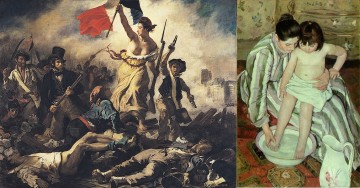My eyes are droopy and I’m over-caffeinated. This writing marathon is killing me and wrangling my brain. To make matters worse, I haven’t left my house in a few days, pacing around aimlessly in my bathrobe, haplessly eating all the food in my fridge. I’m almost certain that my behavior is not abnormal, considering I call this time of the year “Grantwriting Season,” where there is a deadline for a funding opportunity at every corner, namely that big SSHRC (Social Sciences and Humanities Research Council) one that was due a few days ago.
Currently, I am writing letter of intent/proposal for a fellowship. When you start to look at these applications, be it for graduate school or a fellowship grant, they all resemble each other, many asking for jpegs of work, along with a statement. Let it be known that I am no grantwriting expert, just a keen observer. I continuously notice the same words keep coming up again and again: “research and creation.” What is research and creation in the domain of fine arts? How is the research in fine arts different from that of science? Or has the phrase “interdisciplinary” cast its web so wide that science and art have merged into one? If scientific research is based on trials and experimentation, then what is the research of art? Is it possible to conduct innovative research when we live in a post-post-modern world?

From L: Eugene Delacroix, "Liberty Leading the People," 1830; On R: Mary Cassatt, "The Child's Bath," 1893.
Recently, I was reading an interview in ZingMagazine with Dave Hickey, conducted by Sari Carel, on the shifts in American culture and contemporary art. I was captivated by the boldness of Hickey’s remarks as he referred to the various epochs of contemporary art, declaring that art funded by a granting agency falls flat and lacks creative innovation — that zing and punch. Historically, the making of art has always been mischievous, as instinctively ingrained in the artist is the urge to challenge power and every authority figure possible. We can see this in Eugene Delacroix’s Liberty Leading the People (1830), where art is an important contributor to the making of the French Revolution; and even in Mary Cassatt’s painting, The Child’s Bath (1893), which takes issue with the importance of private versus public and the lack of sovereignty that women had in her time. I wonder if contemporary art has hit a standstill. Especially, as Hickey notes, beginning in the 70s, with the shifting role of young artists who stopped trying to challenge power. Rather than working alongside and trying please their seniors in American universities, they were playing the right cards to obtain the public funding needed in order to survive and continue making art.
With actions, there are always consequences; this created a dichotomy within contemporary art, a change in the structure of power, with young artists giving away their autonomy to someone else to decide the value of their artistic merit. From the get-go, Hickey refers to the Abstract Expressionists and Formalists who were in dominance but are now being replaced by the Deconstructionists, who will have the upper hand for the next thirty years (which, Hickey remarks, is “already out of date”). I guess these Deconstructionists that Hickey refers to are the posterior to all granting agencies, the governing fathers and mothers who get to decide if my fellowship proposal gets trashed or approved.
If Hickey’s theory is correct, then there is no such thing as innovative research unless we try escape these government and cultural institutions that fund our graduate education. However this is a catch-22, as we know the implications of not being able to pay our bills or to make our art. This grantwriting process is no different than the model that Hickey describes, where our proposals are reviewed by a peer committee that validates the plausibility and innovation of our research. SSHRC describes this committee as:
The highest standard of expert adjudication has been and will remain at the heart of the granting process at SSHRC. SSHRC research grants and fellowships are awarded through an independent peer review process designed to ensure the highest standards of excellence and objectivity. Peer review is universally recognized as the most objective and effective way to allocate public research funds.
Why does a peer review committee get to decide what is hot and what is not? After all, we don’t know what an artist with a PhD really researches.
I ask questions because I believe in the value of my education and I still believe in the system. However, I also understand that all artists are uniquely different and work in many ways. Who is to say that one process of research is more superior compared to another? I don’t see the big difference between someone who works with the exploration of materials or new media and someone who works with ideas and concepts – it’s all research after all. When I look at the work of Wolfgang Laib, I see his collection of pollen as the research of temporality and space. When I look at Erwin Wurm’s One-Minute Sculptures, I see the research of existence and time. Can I say that everything is research? The only variable that determines what is good and bad research is the language that we use to articulate our ideas and how we prove them. So I end this blog post with a citation from Albert Einstein: “If we knew what we were doing, it wouldn’t be research.”






Pingback: Conduits, People, Indexes, People | all these birds with teeth: this is not about science.